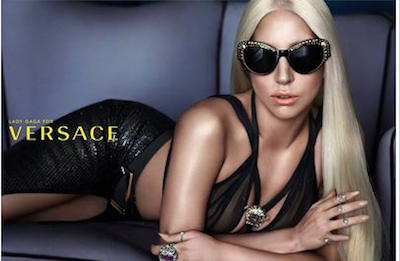Franchising, retail, business

10/06/2015
MONTE-CARLO, Monaco – As China’s contribution to luxury growth is flattening, the luxury industry should be looking online to reap more development opportunities, according to panelists at the Financial Times’ Business of Luxury Summit June 9.
In “Is the Internet the New China?” session, the consensus was that the Internet will drastically change the luxury business, providing the boost needed to combat stagnant growth elsewhere.
In addition to boosting sales, the Internet is a means to communicate and engage with consumers, particularly younger generations, making the investment worthwhile for the long-term.
“Clearly if you ask me at this moment if this Web opportunity can replace china, the difference in sales is huge. But it is a great opportunity,” said Gian Giacomo Ferraris, CEO, Gianni Versace SpA
“The Web is not just sales—it’s a way to interact with our customer, it’s a way to create intelligence, it’s a way to create the future…” he said. “Fashion luxury lifestyle means secure the future and if you are not attracting the young generation, you will not have a future.”
Meeting online
Luca Solca, managing director, sector head, global luxury goods at Exane BNP Paribas, said that opening more stores in China could drive growth. But while many luxury brands tend to prioritize physical store expansion, it sometimes comes at the cost of developing a digital strategy.
Even if consumers have a physical store presence in a particular market, ecommerce still has a place in the consumer purchase path. It provides an opportunity to get to know your consumers on an individual basis and engage them.
Mr. Solca noted that those consumers who shop both online and in-store spend 40 to 50 percent more than their counterparts who buy only in bricks-and-mortar. Also, consumers have gone from spending 25 to 40 percent of their total budget online.
Seventy percent of consumers research online today, a statistic expected to reach 90 percent in five years.
Developing an online platform requires limited excess capital, but can yield strong ROI.
Versace’s online store, while young and only available in nine markets, is growing 50 percent year-over-year.
Versace launched a “wear now, buy now” model, letting customers immediately buy items from its Anthony Vaccarello for Versus runway show in 2014, speeding up the wait time for new merchandise.
Typically, there is a period of months between a runway show and when items hit store shelves, giving fast fashion retailers the opportunity to copy the original design before it is available for purchase. Moving up the production process to before the show and making items available right away may help Versace beat fast fashion at its own game (see story).
Beyond ecommerce, digital enables brands to connect with consumers, sharing their individual DNA and voice. For instance, Versace has posted a song made specially for Donatella Versace by pop star Lady Gaga, as well as the advertising campaign starring the singer.
Versace now earmarks 20 percent of its marketing budget for online efforts, with a set team doing social media. Beyond product messaging, This has helped the brand reach and gather an audience of 18- to 35-year-old consumers, with its CRM data showing these consumers are coming from these activities.
The label also was also one of the first to use recently launched application Periscope. Versace hosted a breakfast in bed with Donatella Versace and shared footage to its Periscope account, allowing viewers to tune in and enjoy the breakfast in real time (see story).
In turn, social media can have an impact on sales. Accessory designer Paula Cademartori said that posting to Instagram or other platforms gives her the ability to interact with consumers, sharing her progress and getting feedback on products. Over two years on the network, she amassed 90,000 followers, and at the same time expanded her wholesale distribution and began getting asked for styles worn by celebrities at red carpet appearances.
Digital as driver
Peter Fitzgerald, president of innovation and digital for the British Fashion Council and U.K. country sales director for Google, talked of the possibilities and opportunities using data.
Google’s 100 billion searches per month can be mined to discover trends and also find ideas for new potential business, meeting the needs consumers themselves are voting for.
The search engine also works to try to connect consumers with the merchandise they want from brands and retailers. If a store shares inventory, Google can deliver results in real-time to those searching for a particular item, driving consumers to a nearby store to purchase.
“What’s most exciting to me over the last handful of years, is traditional businesses that are acting truly multichannel, they’re starting to get a tremendous amount of that growth,” Mr. Fitzgerald said. “Five of the top 10 retailers in most major markets are multichannel players, and it is profitable. If you get them in from one channel to two… their loyalty increases massively.
“There used to be all this discussion on cannibalization, ‘Oh the Web is going to hurt our profits in the stores,’ but actually it’s the reverse, and in luxury it’s more extreme. The affluent, high net individuals demand good cross channel, cross device seamless experience, before during and after buying,” he said. “And so the myth that in some way if you brought your brand online it would diminish the grade is I think being destroyed.”
Fonte:http://www.luxurydaily.com/versace-ceo-internet-investment-more-important-than-chinese-market-sales/